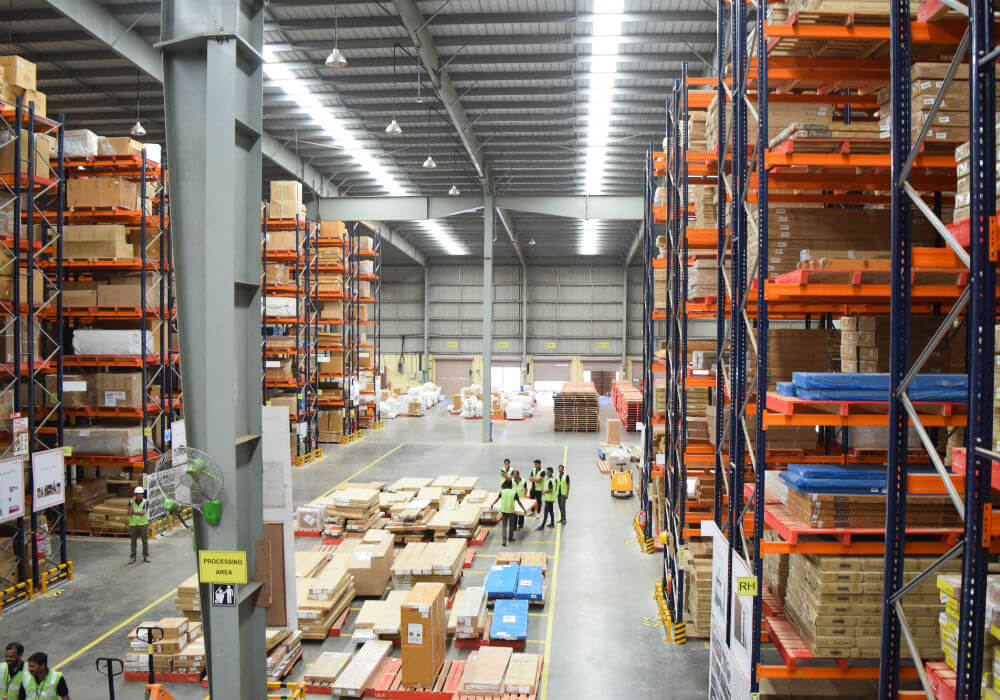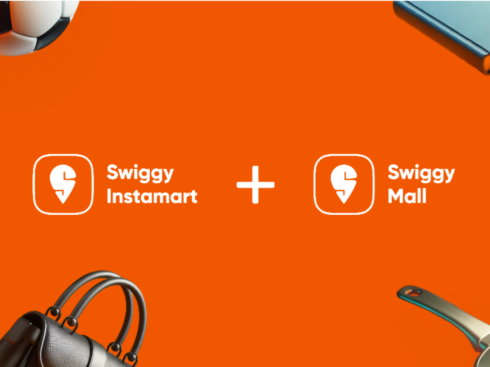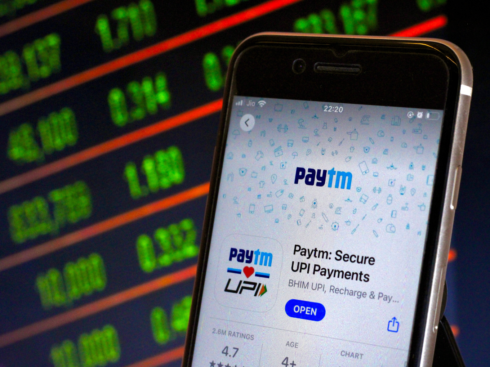SUMMARY
Pepperfry’s Mumbai Fulfilment Centre Is One Of The Largest Furniture Warehouses In The Country
“The nuance to furniture is handling,” says Ashish Shah, founder and COO of Mumbai-based furniture marketplace Pepperfry and former eBay executive. I, along with a handful of journalists were given a tour of Pepperfry’s largest fulfilment centre (FC) located in Bhiwandi, some 30 odd kilometres from Mumbai last week. Ashish claims that this is the largest furniture warehouse in the country – one that can park three airbuses inside! “We are now the largest seller of furniture in the country. It’s natural we should have the largest furniture warehouse as well,” he chuckles.
As I meander through the 2,85,000 sq ft of place, stacked with seven floors of furniture close to 70 feet high, I am left in little doubt.
Ashish further tells us that while the Mumbai centre takes care of furniture business, a similar one in Gurugram takes care of décor and utility products. Then there is another sourcing centre in Jodhpur, where the bulk of Rajasthan’s solid wood furniture is sourced. Besides these fulfilment centres which also act as distribution centres, the firm has 14 more distribution centres in cities like Bengaluru, Kochi, Chandigarh, Chennai, Jaipur, Bhopal and the likes. As these are distribution centres which act as mere pass-throughs and don’t carry inventory locally, they are typically around 3,000 sq feet in size.
So from fulfilment centres like the Mumbai one, products go every day to the distribution centre, following a hub and spoke model. Hence the strategic location and size of the centre. Interestingly, though Pepperfry is a marketplace, it does not rely on sellers to send products to its centres.
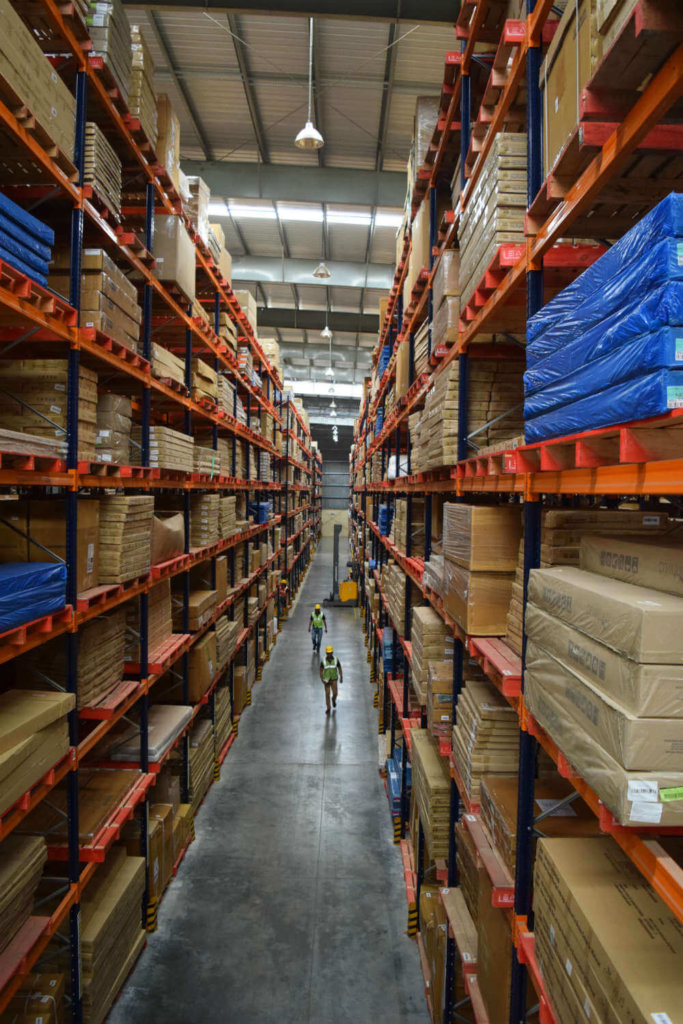
“In this model, we actually go and pick products. So, even the first mile pickups are done by Pepperfry. This was done to gain more control and leverage on economies of scale. Today, every piece of item is picked up by us, hence we have full visibility on the order. This is why these FCs are strategically located, with most of the sellers are within 200 kms of the FC,” reveals Ashish.
But this raises the question as to why a furniture marketplace like Pepperfry has chosen to totally steer clear of third-party logistics, built a distribution network by buying 380 trucks, and then built its logistics subsidiary Pepkart into a big-box logistics company.
The answer boils down to one expected and one not so expected reason – ‘cost per order’ and GST.
Pepperfry: Building A Hub And Spoke Model For Logistics
Rewinding to one and a half years, Ashish reveals that Pepperfry had 11 warehouses only to store inventory – Jodhpur alone had seven, Mumbai had three, Gurugram had one, and Bengaluru had two. For a growing company, adding more warehouses to its kitty seemed the natural way to go.
But with talks of GST looming in, the startup wanted all benefits that accrue from GST. Hence, came the thought of centralising everything to one place and building its first warehouse for furniture. So even if a seller from Delhi wants to sell his products on the portal, Pepperfry brings his/her products to Mumbai. As everything in furniture is now based in the Mumbai FC, tonnes of benefits of scale have been accrued by the startup. And one of them is more cash for investing in technology.
“When we had many warehouses all over, we could not invest in large material handling equipment. For instance, some of the reach trucks in this FC cost $135K (INR 87 Lakh). Therefore we decided to build one warehouse which will be state of the art. And we moved every piece of inventory here,” he adds.
Then again Mumbai had other advantages too. Mumbai is also one of its biggest demand centres, contributing over 20-22% of the overall business for Pepperfry. Hence it made sense for the company to be closer to the centre of demand as well as the head office. Additionally, the city is closest to the busiest port JNPT.
“Hence all import shipments get easier and TAT (Turn Around Time) is lowest in India, which helps us churn out inwards (goods sent to FC) faster than any other location in India. And since most of our sellers are based in Mumbai, we can immediately get products to the warehouse, saving time. Plus Mumbai’s location helps us to cater to both demand from the North and South parts of the country,” reveals Vikas Sharma, Regional Head Supply Chain at Pepperfry.
So today every piece of furniture that Pepperfry sells is both shipped by and delivered by it through its network of 380 customised trucks. Over 100 of them ply within Mumbai alone. Thus the logistics is completely owned by its subsidiary Pepkart, which now does big-box logistics to 500 cities in the country.
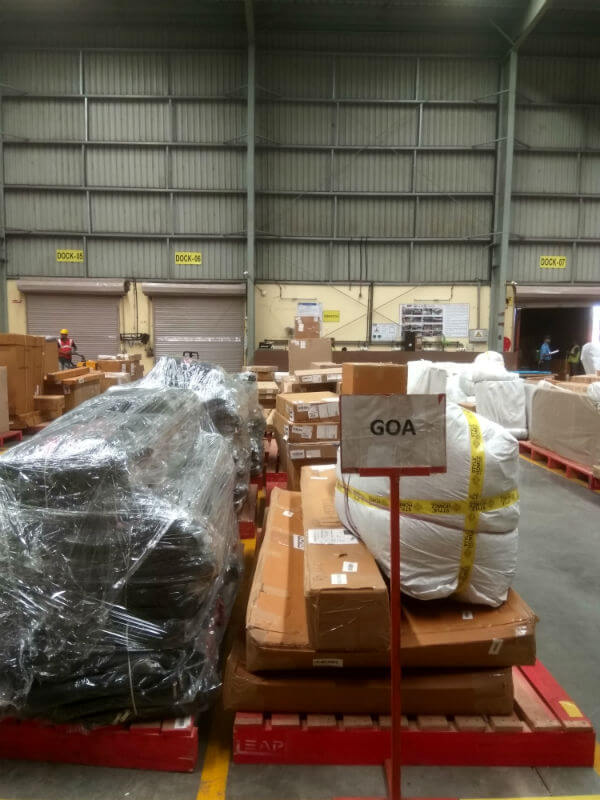
The Mumbai FC acts as the hub for servicing furniture demand, while different cities in various states act as spokes. So for instance, everyday orders for Gujarat are processed from the FC for the Vadodara centre. In the warehouse, there’s a bay called the Vadodara bay, and all pieces of Gujarat will be kept in that bay. From here, they will move to Vadodara, from where the firm does milk runs to chosen routes every day irrespective of the volumes. Thus over a period of time, as the business keeps on going up, costs of logistics keep on coming down. This is what helps bring down the cost per order in the hub and spoke model over a period of time.
The model does seem to be working for Pepperfry. As per Ashish, the high average price of delivery of $46 (INR 3000) in the beginning for most orders, when the firm used third-party service providers, has now come down to almost $4.6 (INR 300). Looks like owning logistics has made a world of difference to Pepperfry, and logistics is something it is backing on for further expansion, which is true even in case of all other ecommerce marketplaces and not just Pepperfry.
But more on that later. First, let’s come back to the centre of the story – the warehouse.
A Peek Into The Pepperfry Mumbai Warehouse
If you occupy only floor space in furniture, you will end up building a very large warehouse. So one needs a lot of airspace. This is why the Mumbai FC is a sight to behold. Almost seven floors of furniture (G+7) close to 52 feet high are stocked in this 2,85,000 sq ft maze. Actually, with over 20,290 pallets to store furniture, it might look like a maze to an outsider like me but to workers in the warehouse, everything follows a set algorithm.
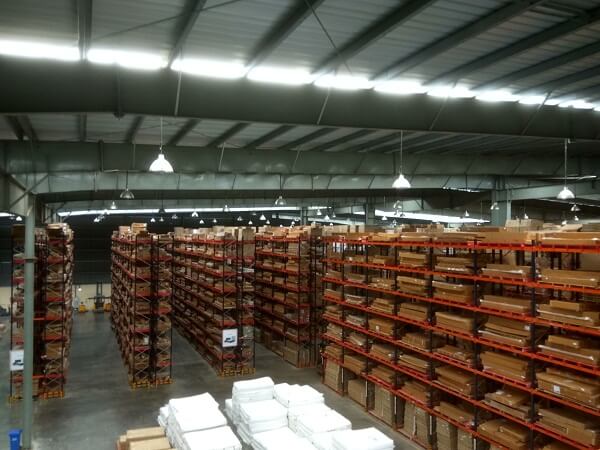
Every product in warehouse is palletised – right from inward till it is delivered. Basically, each product has a set place allocated to it for storing and fetching prior to delivery, on the of the basis of barcodes which record pallet positions through handheld terminals.
So any transaction happening inside the warehouse is fully automated and it’s the handheld terminals that take care of it. Once a product enters the FC (or ‘inwarded’), the product gets mapped to the pallet, and the pallet gets mapped to the location. So one can trace any SKU in any corner of the FC at any point in time. There are daily inventory checks to see if correct picking or put away has been done. As per Vikas, in the last one year, the warehouse has recorded an accuracy level of almost 99.95% as far as inventory stocking operations are concerned.
Also, three fire drills are carried out every week to ensure that everyone is able to use the A, B and C types of fire extinguishers to keep the greatest threat enemy of wood away – fire. Here Ashish reveals, “This is one reason I never switch off my phone, even on holidays, as furniture is a tricky business.”
And costly as well. Carrying over 50,000 pieces of furniture worth $6.2 Mn (INR 40 Cr), the state of the art warehouse is why Pepperfry’s sellers can stock their inventory with the etailer, without having to lose their sleep over it.
But managing so much inventory is in itself quite a task, especially when 90% of the products in the warehouse are not owned by Pepperfry!
And this is where forecasting comes to the fore. After every three months, Pepperfry sends back only 10%-15% of inventory, which goes to show that the furniture etailer has quite mastered the art of demand forecasting for fast moving items.
Ashish reveals that this forecasting happens in the months from January to May.
“Every three months we send the products that were unsold. From January to May, we change our collections, our products, our packaging, and decided who to keep, who not to keep. So even if I have to move one square foot of space in warehouse or add space, it happens from January to May. After May at Pepperfry, you are not allowed to move anything. You are neither allowed to order additional stocks. Even the stock forecasting gets done by June. So we know well in June, what products are going to come in the next three months for Diwali. That’s the time to make business,” he explains.
No wonder, from September to October, business grows almost 80%-100% month-on-month as compared to the rest of the year where it grows at 10%-15% month on month. The moment Diwali gets over, it’s time to plan for the next year, for the next collection and for a new space in the warehouse.
Pepperfry: Building A Browsing Experience Onsite And Offsite
Today Pepperfry boasts of over 3000+ merchants and last mile deliveries to 500 cities in India. Over 65% of traffic on the website is driven by non-furniture items, which also help the etailer get more lifetime value from the customer. The repeat customer rate on the website stands at a significant 58%, with furniture being the largest category, followed by lamps and lighting.
What drives this repeat purchase is the emphasis on building a browsing experience on the site. Says Ashish, “We curate on the website, and not the sellers. We invest in products which will help us become specialists. We are not a search-driven website, our focus is more on building a browsing experience.”
But the experience does not end at the site alone. In fact, it probably starts after that. By focusing on developing in-house big-box logistics, Pepperfry has been able to bring down the delivery time from 25 days to almost 11 days now. In Mumbai, it can be done within 24 hours.
The delivery vehicles are highly customised, and are padded from inside to prevent scratching. There are compartments, belts within the vehicle so as to avoid stacking of products over each other and prevent damage in transit.
Even the algorithm for the logistics software to guide delivery vehicles was developed in-house. That software can now send an alert if a delivery vehicle has been standing still for more than an hour or is exceeding the speed. And sometimes, it simply sends the instruction manual for assembling a new product to Pepperfry carpenters on the fly through the Noticeboard app.
Ashish claims that Pepperfry’s damage rate is around 2.1%, almost 4% lower than the best-in-class companies globally. Hence, starting from stocking the inventory to delivering to customers, it records less than 2% damages. No wonder, he feels that the furniture company which has built a logistics chain of its own can now even supply it to third parties such as those involved in transporting white goods. Thus opening up another channel of revenue for Pepkart in the future.
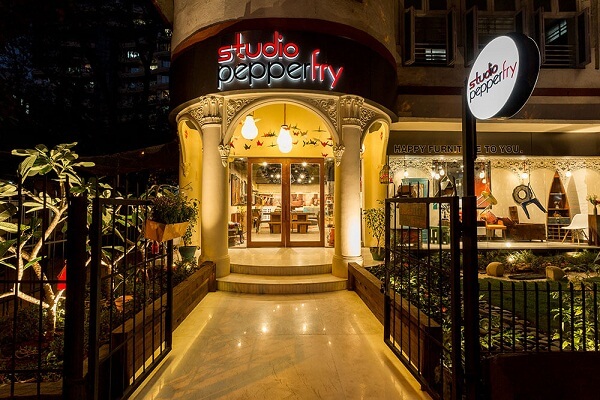
Image Credits: Orangelane
Besides doubling down on its logistic prowess, the online furniture player is also planning to raise the number of its offline experience stores or studios to almost 50 from the current 23 by March 2018. These would be rolled out through both owned and franchisee model.
Recently, it also forayed into the furniture rental space. The service which was launched at scale in eight cities, across 25 product groups including 800 products is aimed at the millennial who are constantly moving jobs and cities. The rental service would ensure that Pepperfry catches its users early on and converts them into loyal users later. Additionally, it has also launched a try-and-buy service whereby for $7.75 (INR 500), buyers can select six sofas in a go for trying at home. When the buyer places an order, this charge gets adjusted. Similarly, it has tied up with used-goods aggregators Zefo and Quikr to help buyers exchange old furniture for Pepperfry vouchers.
For the financial year 2016-17, Pepperfry posted revenues of $15.19 Mn (INR 98 Cr), almost three times that of the previous year. On average, Ashish claims that the company has grown at a compounded annual growth rate (CAGR) of 85% for the past three years. While margins vary for all products, the etailer claims to make upwards of 50% margins on some items and for furniture, it ranges from 55-60%.
Editor’s Note
If earlier Pepperfry was simply competing with players like UrbanLadder, LivSpace, Godrej Interio, by entering into rentals, it is now also competing with the likes of Furlenco and RentoMojo. As per estimates, the overall furniture market is between $15 Bn to $24 Bn annually. The organised segment is around 8%-10% and of this, only 15% is online. According to consulting firm RedSeer Management Consulting Pvt. Ltd, furniture comprised only 1%-1.5% of the total online retail sales in 2016. Pepperfry claims that it commands 50% of the market share and enjoys over 65% of the online traffic in this space.
But will those numbers hold when Swedish furniture giant IKEA makes its way in the country this year? The furniture giant just opened its first experiential centre IKEA Hej (Hello) Home close to the IT hub of Hyderabad and their upcoming first store in the country this week. With plans underway to open its first store in India in spring 2018, it is also planning to add online commerce to its mode of business. Just like Pepperfry’s experience stores, even in IKEA’s Hej Home, products are not for sale but only for display.
Ashish feels that IKEA’s entry will only help Pepperfry organise and expand the unorganised market which currently forms 91% of the category. “Anything which increases the degree of excitement in the furniture category and shifts the consumer buying behavior and perception will benefit all, especially one of the largest players like us,” he adds. As such he feels, the real competition is with the local carpenters and unorganised players in the nooks and crannies of the country.
More so with competitors like Urban Ladder shifting gears from online retail to becoming a furniture brand, it is evident that struggles abound the online furniture retail sector, forcing companies to invest heavily in offline retail. Urban Ladder plans to open eight offline stores in premium cities over the next 2 years and will convert its experience centres to stores.
While Pepkart may have helped Pepperfry to cut down its losses and bring down the average cost of delivery per order, can it also morph into a money minting logistics arm for the furniture etailer? And with the increasing emphasis on building an offline footprint, are happier times in store for the furniture player? Only time will tell but one thing is sure. Pepperfry is not shying away from making these big bets as it continues with its mission to provide its users “happy furniture”.



